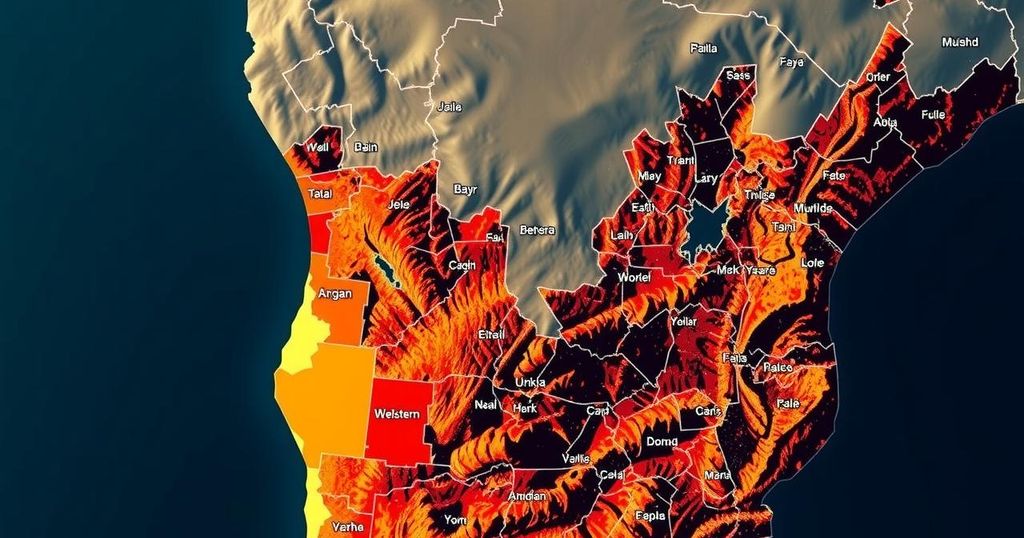Southern Africa Endures Historic Drought Threatening Millions
Southern Africa faces its worst drought in a century, affecting over 27 million people, with significant malnutrition reported among children. Governments have declared national disasters, and the situation is likely to worsen until the next harvest period in 2024. This crisis is attributed to El Niño and exacerbated by climate change, affecting agricultural outputs and leading to severe humanitarian consequences.
Southern Africa is grappling with its worst drought in a century, leaving over 27 million individuals affected, including approximately 21 million children suffering from malnutrition, as reported by the United Nations World Food Programme (WFP). Countries such as Lesotho, Malawi, Namibia, Zambia, and Zimbabwe have declared national disasters due to this calamity, which has crippled crop yields and decimated livestock. As the crisis is anticipated to worsen until harvests are expected in March or April of next year, urgent humanitarian assistance is required to avert a catastrophe.
The current drought has been attributed in part to the El Niño weather phenomenon, which resulted in significantly below-average rainfall. Compounded by rising temperatures linked to climate change, the dry conditions have severely impacted small-scale agricultural practices that rely on rain. The WFP indicates that yields have drastically fallen, with reports citing a loss of up to 80 percent of the harvest in Zimbabwe and 70 percent in Zambia. This situation also compromises hydropower capacity in many areas, exacerbating energy shortages, while some governments, such as those in Namibia and Zimbabwe, have begun culling wildlife to supplement food needs.
As experts point out, sub-Saharan Africa is particularly vulnerable to climate change, primarily due to its economic dependency on rain-fed agriculture and limited resources to mitigate climate-related impacts. Subsequently, the ongoing drought has not only threatened livelihoods but has also demonstrated how climate change is affecting agricultural outputs, crop quality, and harvest times within this region. The prolonged effects of this drought could have far-reaching implications for food security and sustainability in Southern Africa.
The current drought affecting Southern Africa is often considered the most severe in the past century, primarily driven by climatic changes such as the El Niño phenomenon. This region heavily depends on agriculture, which is predominantly rain-fed, making it particularly prone to the adverse effects of changing weather patterns. As climate change continues to escalate, the sustainability and productivity of agricultural yields have become increasingly at risk, threatening the food security of millions and leading to a humanitarian crisis in susceptible areas.
In conclusion, the drought in Southern Africa poses a significant threat to the lives of millions, particularly impacting children and rural communities reliant on agriculture. With reports indicating alarming levels of crop failures and livestock losses, the situation is indicative of a larger crisis driven by climate indicators. Immediate international aid and sustainable climate-resilience strategies are essential to mitigate the ongoing humanitarian impact and support affected regions during this critical period.
Original Source: www.aljazeera.com




Post Comment